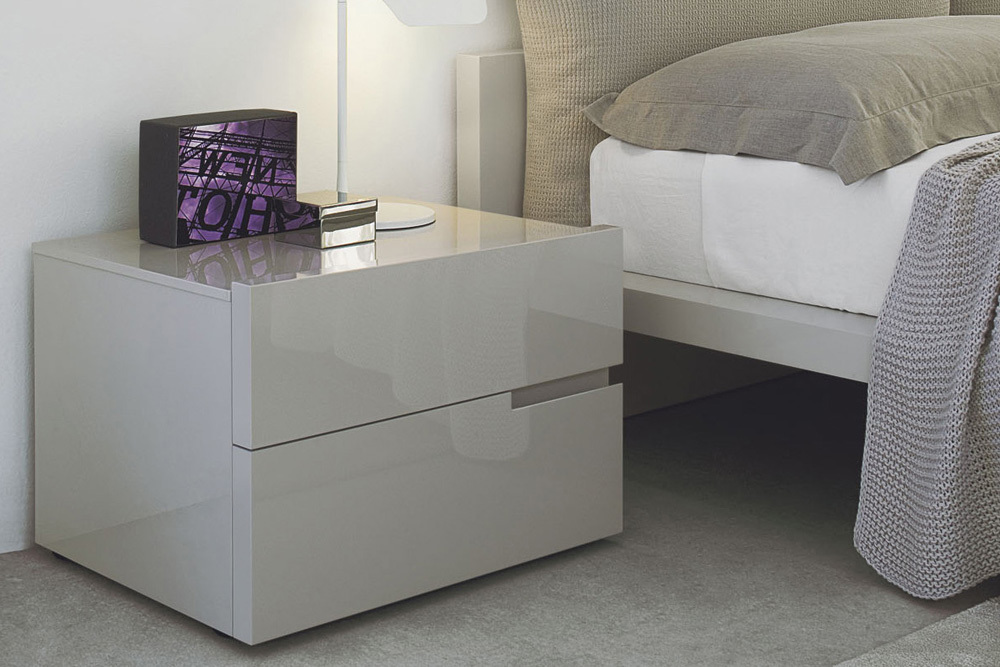Contents:
- Green beauty and its types
- General requirements and care characteristics
- Adaptation of the flower flower to the house
When you want to add a homely atmosphere of comfort, and the interior - liveliness and brightness, neither pictures, statuettes, nor even designer furniturecolors - buy a room flower, for example, begonia. Care for begonias at home will not cause serious difficulties, and the room will immediately come to life.
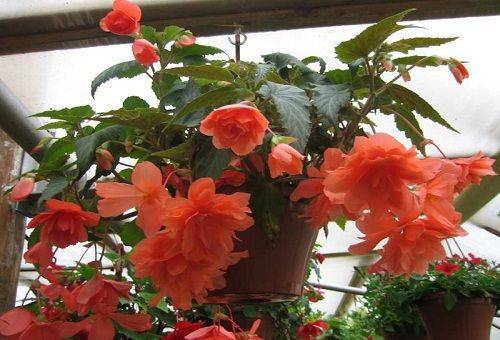
On whatever kind of this flower the choice has not fallen, it will subdue the mistress in a scattering of bright colors or leaves, fantastically painted by nature intricate patterns and colors of various shades. That such beauty lived and blossomed in the house, it is necessary to observe some rules concerning the care of this plant. It is also important that it be properly planted in a permanent pot.
Green Beauty and its Kinds
How to Choose Begonia for a Home? By the call of the heart and appearance, especially as there are many varieties of this plant. The genus includes a huge number of species - more than 1000. Depending on the type, the plant can be a small bush or stretch for 2-3 meters. Therefore, begonias can often be seen not only at home, but also in garden composition, in the design of a flower bed or balcony. For growing in pots at home, usually select specimens of medium and small sizes, luxuriantly flowering or having an unusual bright color of the leaves.
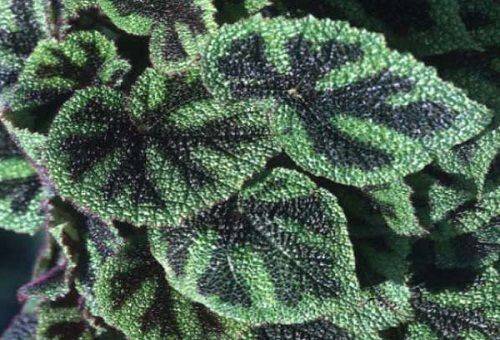
Decorative-leafless begonia
For decorating a house, as a rule, choose begonia of one of two types:
- is decorative and deciduous;
- is decorative and flowering.
From the name it becomes clear that the decorative-deciduous species are struck by a variety of colors on leaves of unusual shape. Mason's begonias, Royal and Imperial begonias can serve as vivid examples. Asymmetric, carved leaves of the Royal Begonia combine colors of various shades. For such an unusual appearance in earlier times, the plant was called "Napoleon's Ear" because of the similarity to the shape and color of the ears of the soldiers of the retreating French army, which they froze in severe Russian weather conditions.
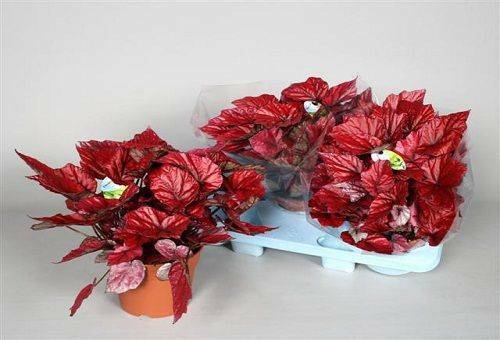
The royal begonia of
The leaves of the begonia of Mason look more laconic than the Royal or Imperial begonias. Its leaf plate is painted in a bright green color, over which a "black" pattern is applied. The unusual appearance of the leaves of the begonia of Mason makes fall in love with not only experienced florists, who certainly want to replenish their collection with this plant, but also people who have a sense of style and who acquire a particular flower for aesthetic reasons. Mason's begonia will perfectly fit in a modern interior, which is often characterized by laconism and restraint in detail.
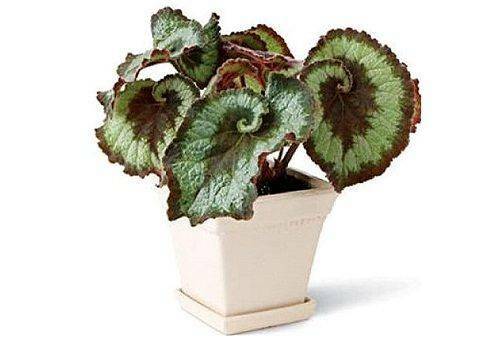
Begonia Mason
Those who love the colors of colors, it is worth paying attention to the decorative and flowering species of this plant, examples of which are the ampel and the ever-flowering begonias. Eternally flowering begonia can be grown both in the open ground and at home. In the open air, ever-flowering begonia is often used in the design of rocky hills because of the specific nature of the creeping growth.
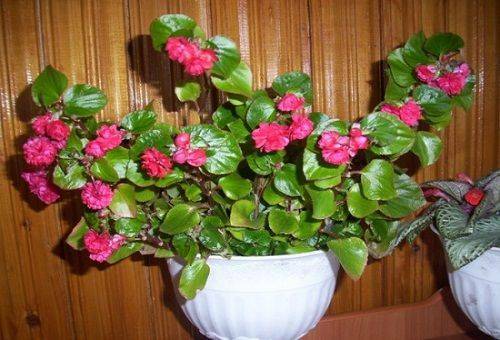
Begonia, ever-flowering
Ampelinia begonia is distinguished by hanging lush flowers, for which it was named, derived from the German word "ampel" - a vase for hanging flowers. For the reason that the plant is monoecious, the flowers on it are male and female: large, lush and miniature. Moreover, the ampel begonia at blossoming is covered with flowers of two different colors.
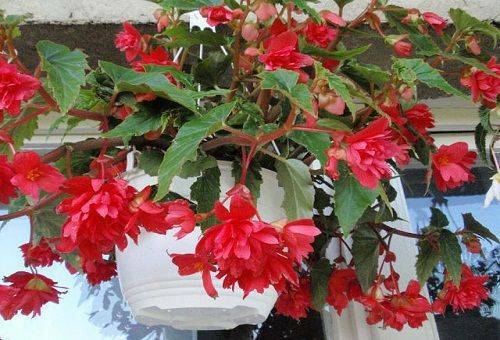
Begonia ampel
General requirements and features of care
Despite the fact that begonia is considered to be an unpretentious indoor plant, which can be grown even by the most advanced florist, it is necessary to know certain rules for caring for it. The basic rules, observance of which will ensure a decent flower content, are valid for all types of this indoor plant grown at home.
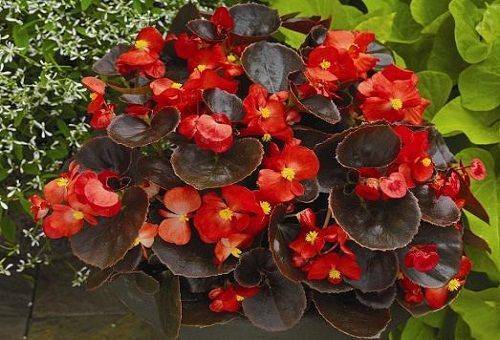
Begonia tuber
So, let's consider the main questions, the answers to which must be known to the person in whose house the "green beauty" has settled:
- illuminance;
- location;
- watering;
- temperature;
- top dressing;
- humidity.
Tip: if it is difficult to remember the specific conditions of care, it is enough to fix the following in memory. This flower of any kind - whether ampel or begonia Mason, needs "medium" conditions: it's not hot, but it's not cold, it's not too moist( talking about soil), but it's not dry, light, but not bright, etc.
Decorative-deciduous and decorative-flowering kinds of begonias love light. But this does not mean that they are capable of withstanding bright sun rays. Therefore, from the direct sun, the plant must be hidden and, if necessary, pritenyat. Based on the recommended illumination level, the place for placing the pot with this flower should be selected on the eastern windows. For deciduous species, for example, the begonias of Mason, windowsills opening to the south-west, and for flowering ones - to the southeast will also suit.
How much to water and how to water begonia, depends on the season, but in general obeys the rule of the "golden mean", because this room flower does not like transfusion and drying. Once the soil has dried to 1 phalanx of the finger in depth, you need to water the plant. Suitable water for room temperature is suitable for this. In winter, in plants that enter a state of rest( this is not typical for a domestic plant - begonia ever-flowering), the irrigation frequency is significantly reduced.

Snail Begonia( Escardo)
The temperature recommended for the normal life of this plant in the Begonium family at home varies from 19 ° C to 23 ° C.This is the average normal room temperature, so you do not need to make special efforts to maintain it."Blooming Beauty" likes fresh air, but some of its species do not tolerate drafts, so airing should be done carefully. To feed plants need different fertilizers depending on the species, season, stage of development, etc. However, they must be diluted to a slightly lower concentration than indicated in the instructions.

Fertilizer Begonia
Begonia loves moist air and vitally needs it, especially it is important for it in winter - during the rest period, when watering is reduced. But it is important to remember that you can not spray them. On the beautiful leaves of Mason begonia and other plants of deciduous species, during the spraying, dark traces appear, which adversely affect the health of the flower and its appearance. To keep the humidity at the optimum level( about 60%), one of the options below can be used:
- air humidifier;
- spraying air from the spray gun without hitting the leaves;
- installation of saucers with water near the pot with begonias.
To control the temperature and humidity of the environment surrounding the plant, it is convenient to use a device that combines a thermometer and a hygrometer.
Adaptation of a flower flower to the house
If the begonia was bought or presented as a gift, it should be moved from the store pot to the permanent one. Planting is not done immediately, but when the flower gets used to the microclimate of the room in which it is to "live."
To get used to it quickly, you need to choose for begonias a permanent place that meets the requirements described above, and do not rearrange the pot from place to place.
When planting is planned, at hand should be:
- a new flower pot;
- special soil;
- drainage( for example, expanded clay).
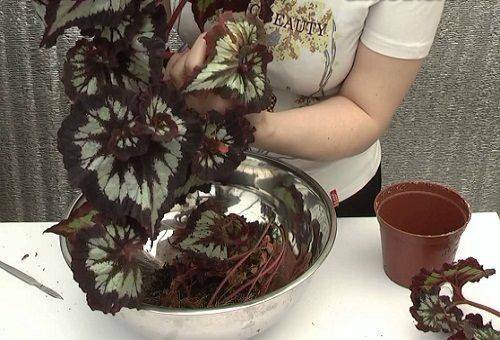
The landing is carried out as follows:
- Drain the bottom of the new pot.
- Fill the soil with about 1.5 cm above the drainage.
- Carefully remove the flower from the soft pot: after having crushed it or made an incision laterally.
- Place the begonia in a new pot and fill it with soil.
- After resettlement of begonias, watch its condition especially carefully: shade, observe the rules of irrigation and provide the necessary humidity level( 60%).
People say that begonia brings happiness and joy to the house, attracts love. So it or not - everyone decides for himself. But the fact that the blossoming beauty creates a wonderful mood and charges with a positive, pure truth, without a doubt!
We recommend to read the article: what plants can not be kept at home



